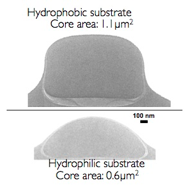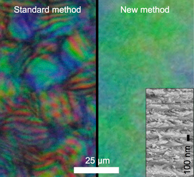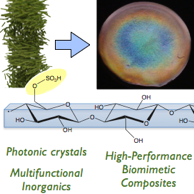Liquid Crystalline Soft Matter
Liquid crystal phase transitions
Liquid crystals is a very broad concept, referring to a large number of systems, homo- or heterogeneous, as well as many different phases. While one sometimes hears of liquid crystals as constituting “the fourth state of matter” (in addition to the classic three; solid, liquid and gas) it is important to realize that one and the same system may actually exhibit several liquid crystalline phases between the liquid and solid states. With certain chiral thermotropics, a sequence of five to ten different liquid crystal phases is not unusual. The transitions between the different liquid crystal phases, as well as to/from the bounding isotropic liquid and crystalline solid states, constitute an interesting field of study in itself.
Inter-liquid crystalline phase transitions can be of first or second order type but even the first order ones involve very small transition enthalpies, reflecting the subtle degree of ordering changes occurring at the transition. Depending on the symmetries of the phases involved, and how the symmetry changes at the transition, the Landau rules tells us that some of the transitions must be first order (although it can be difficult to verify experimentally) whereas other, such as the SmA-SmC transition, are often second order or very weakly first order.
Although the different liquid crystal phases are thus very close to each other thermodynamically, the appearance of the phases can be drastically different (on the other hand, some phases are so similar in appearance that it is almost impossible to detect the transition). The molecular rearrangements taking place as the system enters a higher ordered phase on cooling, for instance, can lead to strong textural differences, in particular in combination with restrictive boundary conditions. A striking and beautiful example is the N-SmA transition in colloidal shells, which constitutes one of our major current research foci. An example of a phase transition where the structural changes are unusually small - of great benefit to applications of these types of liquid crystal phases - is the de Vries transition between SmA and SmC phases, the key characteristic of which is that a long-range uniform molecular tilt appears without any important consequences for the smectic layer thickness. Although the geometric changes at this transition are unusually small, there are other distinct fingerprints of it, such as a strongly increasing birefringence. And in case of a chiral material the spontaneous polarization arising in the SmC* phase render the response to electric field very different from that in the SmA* phase.
 Back to research overview map.
Back to research overview map.


